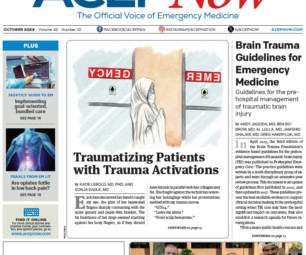VACEP Legal Victory Illustrates Why the Prudent Layperson Standard Still Matters
ACEP Now
OCTOBER 26, 2023
Maryland enacted the first “prudent layperson standard” (PLP) in state law in 1993 (see related timeline). The PLP standard they devised protected a patient’s access to emergency medical services, including on-call services, if the medical condition of the patient manifests itself by acute symptoms of sufficient severity (including severe pain) such that a prudent layperson could reasonably expect that the absence of immediate medical attention could result in serious jeopardy to the health of t







































Let's personalize your content